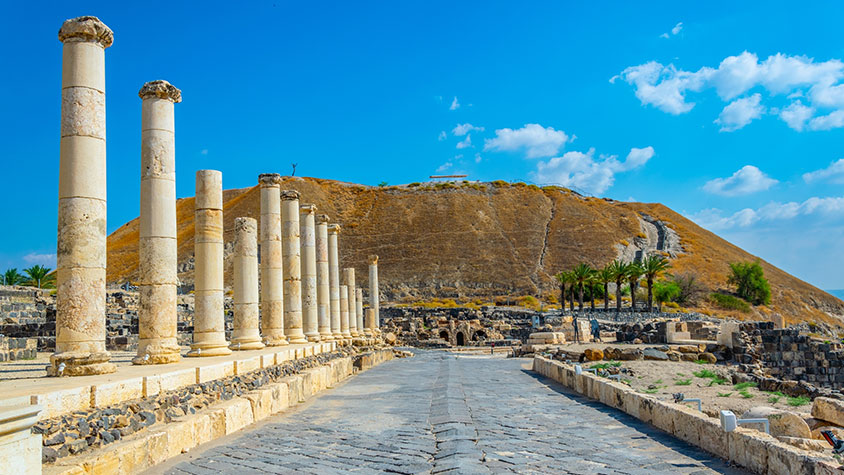The Middle East offers a visual feast for travelers keen on seeing very old and very impressive architecture—particularly in those areas that have been populated for centuries. Perhaps no place offers the most well-preserved ancient archaeological ruins than the Beit She’an National Park in Israel.
Beit She’an, one of the oldest regions in Israel, the center of which was the site of one of ten Decapolis cities—ten ancient cities under Roman rule but which were allowed to operate autonomously—lays at the crossroads of ancient trade routes.
Beit She’an has witnessed a continuous succession of empires since its inception during the Neolithic times (Stone Age). Rulers included the Egyptians, the Canaanites, the Israelites, the Assyrians, the Greeks (Hellenistic period), the Romans, the Byzantines, the Crusaders, and the Ottomans.
The city was a thriving metropolis during the reigns of both King David and King Solomon, as well as during the Roman period nearly 1000 years later.
King Saul and his three sons were killed in battle on nearby Mount Gilboa around 1010 BC. Their bodieswere hung on the city walls as war trophies (I Samuel 31:10). The men of Jabesh-Gilead (a location in modern-day Jordan) marched on the city, removed the remains, and buried them in Jabesh.
The whole incident was so grievous to King David that he ordered the entire nation to sing a song of lament for the stricken Saul and his son Jonathan. The line “Look how the mighty have fallen” from the Song of the Bow is still used today to mean that a once important person has been humbled by circumstances.
Today, Beit She’an serves as a regional center for towns in the Beit She’an Valley. It is located near the Jordan River Crossing, one of three crossing points between Israel and Jordan.
The ancient city ruins are now protected within the Beit She’an National Park. Interestingly, the ruins from the biblical period lay on top of a prominent tell—an artificial mound consisting of the stratified debris of a succession of consecutive settlements—underneath which lay ruins from previous civilizations. All these ancient settlements have the good fortune of overlooking the breathtaking Greek and Roman ruins in the valley.
The ruins of the more spectacular edifices in the once-occupied Roman city are a 5,000-seat theater and two giant adjacent bathhouses. The colonnaded streets were once lined with shops, and at the end of the street were a few temples with a nearby nymphaeum—a Greek shrine dedicated to nymphs that doubled as a wedding site—and a basilica. Also common in just about any Roman city back in the day were hippodromes, and Beit She’an was no different, though this city’s hippodrome was later transformed into an amphitheater for gladiator and animal shows.
Modern-day visitors to Beit She’an can be treated to an audio-visual night show known as She’an Nights. Considered the fourth biggest audio-light show in the world, the spectacle begins with a 10-minute presentation in the ancient theatre, followed by some impressive special effects. Juxtaposed against all those antiquities, it makes for one memorable visit that is a must-see when touring Israel.
###
Experience Israel’s protected region of Beit She’an with a rich biblical, cultural, and many-layered architectural history encompassing at least seven ruling empires.
Email Cindy at cindy@israeladvantagetours.com or
visit www.israeladvantagetours.com to learn more about travel to the Lands of the Bible.















